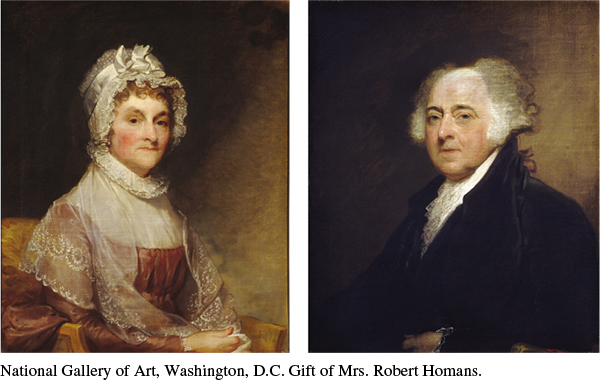The American Promise: Printed Page 244
The American Promise, Value Edition: Printed Page 226
The American Promise: A Concise History: Printed Page 258
The Election of 1796
The American Promise: Printed Page 244
The American Promise, Value Edition: Printed Page 226
The American Promise: A Concise History: Printed Page 258
Page 244Washington struggled to appear to be above party politics, and in his farewell address he stressed the need to maintain a “unity of government” reflecting a unified body politic. He also urged the country to “steer clear of permanent alliances with any portion of the foreign world.” The leading contenders for his position, John Adams of Massachusetts and Thomas Jefferson of Virginia, in theory agreed with him, but around them raged a party contest split along pro-
The American Promise: Printed Page 244
The American Promise, Value Edition: Printed Page 226
The American Promise: A Concise History: Printed Page 258
Page 245Adams and Jefferson were not adept politicians in the modern sense, skilled in the arts of persuasion and intrigue. Bruised by his conflicts with Hamilton, Jefferson had resigned as secretary of state in 1793 and retreated to Monticello, his home in Virginia. Adams’s job as vice president kept him closer to the political action, but his personality often put people off. He was temperamental, thin-

The leading Federalists informally caucused and chose Adams as their candidate, with Thomas Pinckney of South Carolina to run with him. The Republicans in Congress settled on Aaron Burr of New York to pair with Jefferson. The Constitution did not anticipate parties and tickets. Instead, each electoral college voter could cast two votes for any two candidates, but on only one ballot. The top vote-
The American Promise: Printed Page 244
The American Promise, Value Edition: Printed Page 226
The American Promise: A Concise History: Printed Page 258
Page 246A failed effort by Alexander Hamilton to influence the outcome of the election landed the country in just such a position. Hamilton did not trust Adams; he preferred Pinckney, and he tried to influence southern electors to throw their support to the South Carolinian. But his plan backfired: Adams was elected president with 71 electoral votes; Jefferson came in second with 68 and thus became vice president. Pinckney got 59 votes, while Burr trailed with 30.
Adams’s inaugural speech pledged neutrality in foreign affairs and respect for the French people, which made Republicans hopeful. To please Federalists, Adams retained three cabinet members from Washington’s administration—